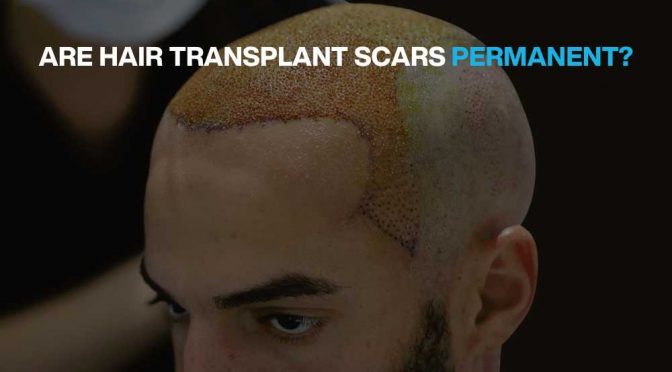-
Languages ENGLISH
-
Call 24/7 +39 030 764 1043
-
Open Hours Mon - Sat: 9am to 6pm

A scar from a hair transplant can be permanent, but it varies from many factors. Also, the degree of scar visibility varies. Some scars fade over time with proper care, the right products, and treatment, whereas the majority of others are concealed by hair. The key to “minimal scarring” on the scalp, however, is selecting the top hair transplant clinic. If your surgeon is qualified and skilled, “visible” scarring would not be a concern.
Hair transplantation by definition is a surgical procedure in which the hairs from the donor site are extracted and transplanted into the recipient site. As it is a surgical process, scars are inevitable. Yet, the amount of scarring is mainly determined by the surgeon’s skills; the technique utilized and the instruments involved. A good surgeon will yield minimal scars that diminish as and when the hair grows.
Sapphire FUE and DHI are the most recent methods of hair transplantation technology. In this article, we will examine every aspect of hair transplant scars, including their severity and mitigation techniques.
Hair transplantation is a cosmetic surgery done on the scalp to cover bald patches. During the procedure, the grafts are extracted from the donor site (mainly the back of the scalp) to the recipient site (the bald region).
There are two advanced techniques for hair transplantation–
The studies suggest that the success rate of hair transplant through these techniques is over 90%..
Due to the nature of the FUE hair transplant procedure, it yields some scarring which vanishes once the transplanted hair grows back. During the procedure–
Here, due to the punches made, the procedure leads to wounding. The advantage of the Micro Fue Sapphire hair transplant technique is that the scars are easy to conceal and they diminish shortly after the procedure. This is because the punches made are 0.7 mm to 0.9 mm in diameter, which is very small compared to other hair transplant procedures like the simple FUE.
DHI hair transplant is the most advanced technique and an advanced instrument namely, DHI Choi implanter pen is used to directly implant the hair follicles. During the procedure–
Here, though the incisions made are very small, yet, there is some wounding due to the extraction and transplantation of hair follicles. The DHI hair transplant scars are less as compared to FUE hair transplant scars as DHI is a minimally invasive technique. However, it must be said that with DHI Choi pen the scars are not permanent if the procedure is carried out in the proper way.
Soon after surgery, scabs will form on the donor and recipient sites. These are removed after two weeks. And during the recovery process, it is essential that you adhere to your surgeon’s aftercare instructions. The precautions after a hair transplant are mentioned below.
Advancements in cosmetology have led to the revival of techniques for removing hair transplantation scars, which can detract from one’s overall appearance. This is especially true for patients that have already done a surgery with an invasive technique like; FUT and simple FUE Scarring after a hair transplant procedure is possible; moreover when the selection of the clinic isn’t the best; but these scars can be concealed using a variety of methods. They consist of–
Hair transplant scars are evitable and differ in intensity from person to person. Successful hair transplants with no visible scars are possible. It depends on the expertise of the surgeon; the right selection of the technique and the instruments utilized. The inflammation and scars are healed completely within a month after the hair transplant procedure.
If you are looking to have a hair transplant that yields minimal to no scars, BlueMagic Group is your solution. We have a team of experienced surgeons. Our clinic uses the latest technological tools to minimize the scars and yield better results. Our latest Sapphire FUE hair transplant techniques and DHI using CHOI Pen helps us to perform precise surgery that is minimally invasive.
So book your free consultation call today!
Don’t go for a forehead reduction surgery before reading this
Curious to know how your hair transplant would go? Connect with us today and let us help you understand each and everything with the help of the experts. & let us give you complete details with the help of a free consultation.
 Get free consultation
Get free consultation
Kindly fill up this form and we will get back to you at the earliest.